#Instructions:
Explore tagged Tumblr posts
Text
CRITIQUE OF CRITICAL THEORY, VI
This posting will be the last dedicated to critiquing critical theory. Overall, this blogger believes that this construct and its accompanying critical pedagogy have contributed a number of positive effects to the field of civics education and social studies in general. Mostly, those contributions have been in relation to its focus on the needs of the disadvantaged, particularly considering how the advantaged have used their resources to further their economic interests, often at the expense of the lower classes.
Demonstrating this last claim, there are ample cases in which the U. S. Chamber of Commerce and big business in general can take advantage of their ability to hire top rated attorneys. This representation, in turn, can protect them against lawsuits and other legal efforts to compensate harm that average people might suffer at the hands of these entities.[1]
Along with favoring these “big shots” in tort litigation, they favor contractual agreements and other provisions of the law that hinder regular people’s rights to gain access to the courts or, if access is achieved, have favorable decisions rendered. This type of information is what would be highlighted in a critical education curriculum.
Not only would this alleged unjust behavior be shared with students, but critical leaning lessons would analyze what individuals and communities can do about righting these wrongs. And if done according to instructional strategies that that construct promulgates, it would be done in an open discussion format.
This would not only enhance the knowledge of students but also be useful in developing their intellectual capabilities. And lest one forgets, such instruction helps the communal interests of those less advantaged students since part of the lesson is to teach and encourage students to actively engage in political action – praxis – which targets those who can authoritatively right the wrongs of any exploitive conditions.
But this blogger does see that the approach suffers from certain shortcomings. For one, the construct is situated upon an array of assumptions that its adherents apply to the debate over curricular issues including its instructional methodology. For example, he once debated a critical pedagogue over whether the US Constitution is a slave document or not.
Admittedly, it was mostly a semantic argument, but words are important. To give readers the summary substance of that argument, the critical pedagogue claimed that by permitting slavery to not only exist but flourish and, by doing so, it promoted the enslavement of African descendants. This blogger argued that the Constitution did accommodate slavery – in some very meaningful ways – but it did not mandate it and, with the structure and values it promoted, it helped establish the stage for its eventual demise.
Irrespective of how readers judge this back and forth – if it were limited to two people having a disagreement, no big deal. But if there is a corps of teachers believing the nation’s constitution is an exploitive legal document, this can be a very hurtful assumption or belief. Such conclusions can logically lead to de-legitimizing arguments or claims being presented to unsophisticated populations of students and some might reasonably consider that dangerous.
Hopefully, readers do not believe this type of concern links this blogger with the rhetoric and policies of Governor Ron DeSantis and his favoring the disallowing of leftist or critical content in Florida classrooms. This blogger believes that true liberty is not achieved through educational censorship, but through the inclusion of as many messages as is reasonably possible.
This blogger’s concern with critical pedagogy is that through its questioning – how they, the questions, are reflective of their ideological beliefs – steer their approach toward those ideological beliefs and do stack the deck against truly open inquiry. Of course, with such unfettered bias in how the material is presented or under what context it stands, the accusation of indoctrination seems justified.
He is not trying to overstate the case, but he feels, having known critical pedagogues, that in some cases – i.e., in terms of some educators – the net effect will be to unduly promote a political agenda which happens to undermine the legitimacy of the nation’s political system. That would be bad enough, but when couched in the language of an issue-centered curriculum, the influence would be tacit and even more insidious.
How? This approach, critical pedagogy – has a definite political agenda backing its efforts. It highly relies on Marxist biases. While many do not consider themselves Marxists – and often with good and honest reasons – it is in danger of precluding the legitimate concerns and constructive contributions conservatives add to the related debates. In other words, the approach is too committed to leftist positions as expressed in the information they tend to provide or in the questioning they employ.
If the reader wishes to read more of what critical pedagogues have to say, let this blogger suggest some names. He believes these writers and their works would be a good start in delving into critical literature. This list includes, of course, Paulo Freire, but also Michael Apple, Henry Giroux, Jonathan Kozol, Ivan Illich, John Holt, Peter McLaren, bell hooks, and Ira Shor (who actually bases his writings on his own classroom experiences). And there are many others.
[1] See for example, Michelle Conlin, Dan Levine, and Lisa Giron, “Special Report: Why Big Business Can Count on Courts to Keep Its Deadly Secrets,” Reuters (December 19, 2019), accessed May 27, 2023, https://www.reuters.com/article/us-usa-courts-secrecy-lobbyist-specialre/special-report-why-big-business-can-count-on-courts-to-keep-its-deadly-secrets-idUSKBN1YN1GF.
#critical theory#critical pedagogy#indoctrination#oppression#disadvantaged#pedagogic questioning#classroom instruction#civics education#social studies
0 notes
Photo

PORTO ROCHA
1K notes
·
View notes
Photo

🧀🥪🌶️🥭 The Ravening War portraits 🧀🥪🌶️🥭
patreon * twitch * shop
[ID: a series of digitally illustrated portraits showing - top left to bottom right - Bishop Raphaniel Charlock (an old radish man with a big red head and large white eyebrows & a scraggly beard. he wears green and gold robes with symbols of the bulb and he smirks at the viewer) Karna Solara (a skinny young chili pepper woman with wavy green hair, freckled light green skin with red blooms on her cheeks. she wears a chili pepper hood lined with small pepper seeds and stares cagily ahead) Thane Delissandro Katzon (a muscular young beef man with bright pinkish skin with small skin variations to resemble pastrami and dark burgundy hair. he wears a bread headress with a swirl of rye covering his ears and he looks ahead, optimistic and determined) Queen Amangeaux Epicée du Peche (a bright mango woman with orange skin, big red hair adorned with a green laurel, and sparkling green/gold makeup. she wears large gold hoop earrings and a high leafy collar) and Colin Provolone (a scraggly cheese man with waxy yellow skin and dark slicked back hair and patchy dark facial hair. he wears a muted, ratty blue bandana around his neck and raises a scarred brow at the viewer with a smirk) End ID.)
#trw#the ravening war#dimension 20#acoc#trw fanart#ttrpg#dnd#bishop raphaniel charlock#karna solara#thane delissandro katzon#queen amangeaux epicee du peche#colin provolone
2K notes
·
View notes
Photo

(vía Another America 50 by Phillip Toledano)
74 notes
·
View notes
Photo

One of my favorites by Paul Lehr, used as a 1971 cover to "Earth Abides," by George R. Stewart. It's also in my upcoming art book!
1K notes
·
View notes
Quote
もともとは10年ほど前にTumblrにすごくハマっていて。いろんな人をフォローしたらかっこいい写真や色が洪水のように出てきて、もう自分で絵を描かなくて良いじゃん、ってなったんです。それで何年も画像を集めていって、そこで集まった色のイメージやモチーフ、レンズの距離感など画面構成を抽象化して、いまの感覚にアウトプットしています。画像の持つ情報量というものが作品の影響になっていますね。
映画『きみの色』山田尚子監督×はくいきしろい対談。嫉妬し合うふたりが語る、色と光の表現|Tokyo Art Beat
156 notes
·
View notes
Photo
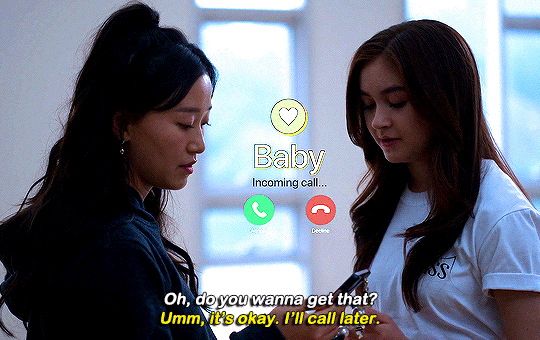
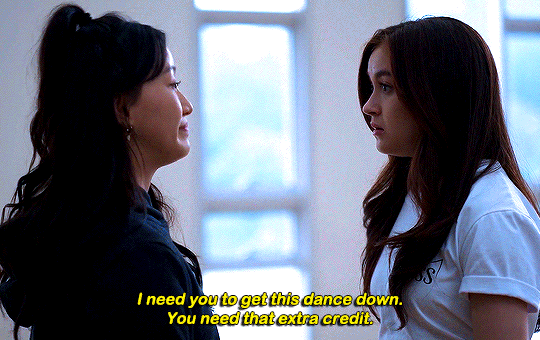


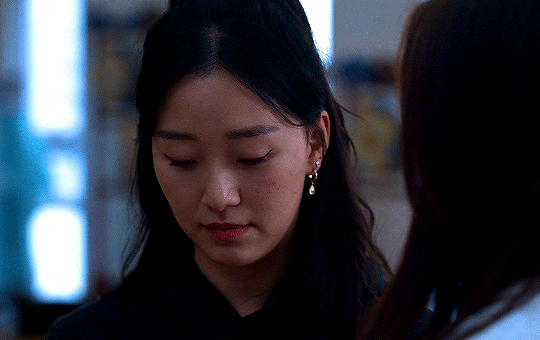
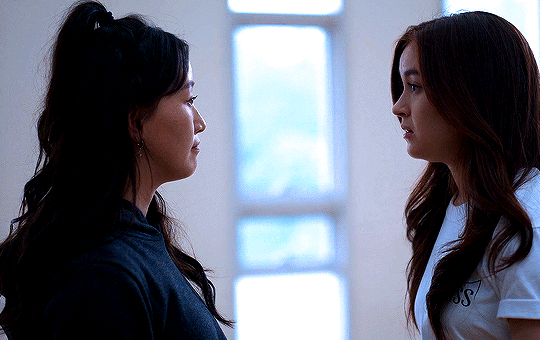

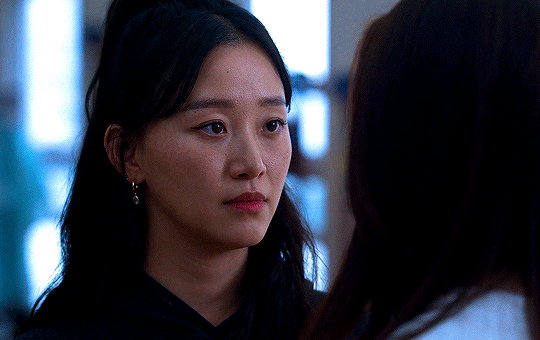


#thistension
XO, KITTY — 1.09 “SNAFU”
#xokittyedit#tatbilbedit#kdramaedit#netflixedit#wlwedit#xokittydaily#asiancentral#cinemapix#cinematv#filmtvcentral#pocfiction#smallscreensource#teendramaedit#wlwgif#kitty song covey#yuri han#xo kitty#anna cathcart#gia kim#~#inspiration: romantic.#dynamic: ff.
1K notes
·
View notes
Photo
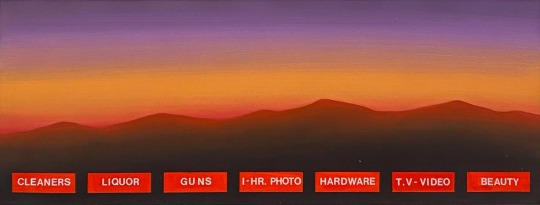
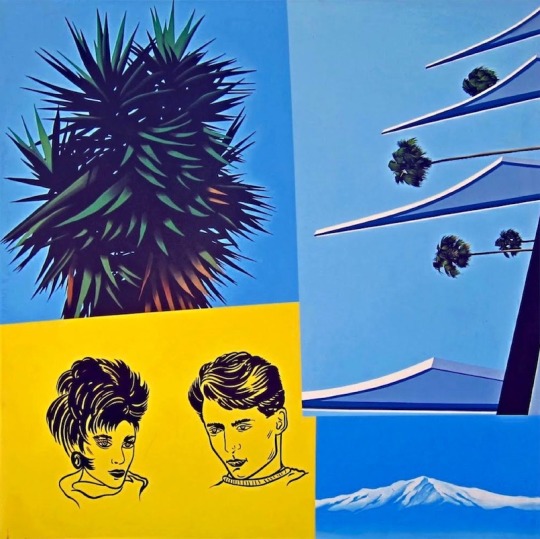

No one wants to be here and no one wants to leave, Dave Smith (because)
111 notes
·
View notes
Text
CRITIQUE OF CRITICAL THEORY, V
The last posting reviewed the elements of an instructional approach known as issue-centered teaching. In a few words, the approach has teachers present controversial issues or topics – usually in the form of questions – so that students can research them, reflect on the information they discover, develop positions regarding the individual questions, defend their position(s) as they interact with other students, and settle on defensible positions as to what should be done regarding each issue.
Of course, since a final position is never final, it is always subject to further change to accommodate any new information the students might come across or any changes they might experience regarding their relevant values. In all of this deliberation, students are given the opportunity to clarify their values concerning the issue under consideration.
As that posting emphasized, this approach should be fairly apolitical in that instruction simply presents the issues for student consideration along with relevant information, but not limiting that information to one side of any ensuing debate. The aim is to present students with all or nearly all publicly available information without biasing some sources over others.
The approach’s content and scope seem to be guided only by a desire to present students with issues that seem contentious at a given time, that contemporary voters are called upon to consider as they engage in their civic duties. Supporters of this approach claim, as just alluded to, that it offers students the opportunity to clarify their related values. The approach also strives to have students develop their advanced intellectual abilities.[1]
What this general review indicates is that the approach seems to be fairly neutral. On the surface, one might interpret “issued-centered” inquiry as merely a restatement of the type of inquiry Lawrence Kohlberg,[2] Louis E. Raths,[3] or Fred M. Newmann and Donald W. Oliver[4] called for in their values education models. If applied, this blogger foresees that what will be studied by students are the “front page” issues of a particular day. That is, this instruction will deal with issues that “sell�� – they are accepted as what people care about at a given time.
Much of the instructional thrust of many former movements in social studies and civics, as was advocated by the New Social Studies of the 1960s, was in this vein. Its popularity among academics seems to vary from year to year, but overall, they have given this type of pedagogy a favorable standing. Such approaches would be more in line with progressive advocates of the natural rights construct.
But what this blogger believes is that the rationale for this approach is a bit modest. They might not all consider themselves critical pedagogues, but their political leanings do at least seem sympathetic to the critical position. As this blogger stated in the last posting, he considers issue-centered approach as critical light. Yet, those who support it do wish to maintain a distinction between critical pedagogy and the issue-centered instructional approach. They represent this following sentiment:
Issue-centered learning is organized around existing and emerging societal and environmental global issues (i.e., water, health, poverty, climate, pollution, migration, energy, renewable resources) on a global and local scale and ensures that students develop the … characteristics, skills and competencies that complements the functional knowledge they learn and enables them to become leaders for a sustainable future …[5]
For example, advocates argue for the use of conflict topics, as opposed to consensus topics, to stir student inquiry.[6] The gist of that position seems to associate conflict topics with critical pedagogic concerns. Such an approach is highly congruent with the Freirian curricular thrust which was reviewed in earlier postings and is an unambiguous example of the critical approach.
As used in most of the issue-centered literature, the inquiries this approach encourages has led teachers to present their students with what this blogger considers as being euphemisms for critical inquiries. Through the years, reviewing these issues or topics, one can detect a definite trend which is reflected in the following exemplary questions:
• What is a legitimate government and where does its power originate?
• When should governmental authority be ignored or rejected?
• Should student newspapers have the same right to freedom of the press as other newspapers?
• Should a student write a letter to the principal to protest censorship?
• Should the colonists have protested British actions with violent demonstrations?[7]
What are not found are examples that might take the following form:
• Should the running of the student newspaper be considered a part of the school curriculum and subject to the policies defined by the school’s educators?
• Should school administrators set up well-organized processes to consider student concerns at the appropriate times?
• Should the British authorities have used coercive force to put down the illegal activities of the colonists during, for example, the Boston Tea Party?
• Should the state prohibit the termination of the life of a fetus and protect that human’s right to life?
Please don't believe that this blogger would use this second set of questions in a classroom; he uses them here to make a point.
The examples offered by advocates of this approach usually exemplify a politically liberal or left of center bias. They all question potential oppressive activities by those in power. As one reads through that literature, one can find similarly leftist examples. As a matter of fact, they tend to surpass a liberal bias and can be considered a critical light bias (a more leftist view than what most would consider “liberal” biases).
On the other hand, the above examples offered as alternatives have a definite rightist bias. The point is that even if the methodology used maintains an “open discussion” format, the issues or content presented and the language used in that presentation, particularly if it is on an ongoing basis, can and would promote an ideological bias.
Freire,[8] in his instructional approach, is at least very open and direct about this point; he is out to fight oppression on people by the upper class. An open discussion format utilized by the “issued-centered” approach does not, through its questioning, eliminate a bias which can be judged to have an indoctrinating effect.
In citing the criticism of a social reconstruction or reconceptualization curriculum, William H. Schubert writes,
If they would become powerful enough to do so, the desire of educators to foist their political beliefs on children and youth is tantamount to indoctrination of a very serious kind. It sparks the memory of youth in totalitarian nations who are brainwashed to support a revolution or to spy on their own families and report infractions of rules. Even in less severe cases, the question arises as to the right of educators to play deity in the dictating of social change.[9]
Let this blogger be clear; he is of the firm belief that any civics instruction cannot totally avoid being biased. If nothing else, the instructional questions teachers ask will give them away. The aim is to be honest. This blogger doesn’t believe issue-centered advocates, at least as indicated by such text as that which is sponsored by the professional organization of social studies educators, are being honest in terms of their “openness.”[10]
This disinformation might not be intentional, but it is there, nonetheless. Perhaps being considered dishonest is too strong a term; after all, a lie resides in the attempt to deceive.[11] But one can easily remind the supporters of critical pedagogy or its off-shoot, issue-centered curriculum, of their own admonition toward others: there is no such thing as a neutral approach to education, especially civics education.
Among the apparent problems of civics education is: how can one design a program of civics that is non-ideological, except for being committed to democratic principles? If a political orientation is unavoidable, would it not be democratically better to acknowledge the fact, identify the political basis of the curriculum, and have that basis, as much as possible, be true to open deliberation as conceptualized by the nation’s constitutional makeup?
[1] Anna S. Ochoa-Becker, “Introduction,” in Handbook on Teaching Social Issues: NCSS Bulletin 93, eds. Ronald W. Evans and David Warren Saxe (Washington, DC: National Council of the Social Studies, 1996), 1.
[2] Lawrence Kohlberg, “The Cognitive-Development Approach to Moral Education,” in Curriculum Planning: A Contemporary Approach, eds. Forrest W. Parkay and Glenn Hass (Boston, MA: Allyn and Bacon, 2000), 136-148.
[3] Louis E. Raths, Merrill Harmin, and Sidney B. Simon, Values and teaching: Working with Values in the Classroom (Columbus, OH: Charles E. Merrill Publishing Co., 1966).
[4] Fred M. Newmann and Donald W. Oliver, Clarifying Public Controversy: An Approach to Teaching Social Studies (Boston, MA: Little, Brown, and Company, 1970).
[5] Katrin Muff, “Tag Archives: Issue-Centered Education,” Positive Impact Blog (August 28, 2012), accessed May 24, 2023, https://positiveimpact.blog/tag/issue-centered-education/.
[6] Cleo H. Cherryholmes, “Critical Pedagogy and Social Education,” in Handbook on Teaching Social Issues: NCSS Bulletin 93, eds. Ronald W. Evans and David Warren Saxe (Washington, DC: National Council of the Social Studies, 1996), 75-80,
[7] These questions are offered in Ronald W. Evans, Fred M. Newmann, and David Warren Saxe, “Defining Issues-Centered Education,” in Handbook on Teaching Social Issues: NCSS Bulletin 93, eds. Ronald W. Evans and David Warren Saxe (Washington, DC: National Council of the Social Studies, 1996), 2.
[8] Paulo Freire, Pedagogy of the Oppressed (New York, NY: Continuum Publishing Company, 1999).
[9] William H. Schubert, Curriculum: Perspective, Paradigm, and Possibility (New York, NY: MacMillan Publishing Company, 1986), 32.
[10] As exemplified by Ronald W. Evans and David Warren Saxe, editors, Handbook on Teaching Social Issues: NCSS Bulletin 93, eds. (Washington, DC: National Council of the Social Studies, 1996).
[11]Perhaps the words honest and dishonesty are too strong. I believe these educators should know better, but I don't think they necessarily believe they are attempting to persuade their students of a particular political ideology. More likely, there is a lack of reflection regarding the use of this approach and its potentially indoctrinating effects.
#issue-centered instruction#critical theory#critical pedagogy#controversial issues#inquiry#indoctrination#ideology#civics education#social studies
0 notes
Photo

PORTO ROCHA
709 notes
·
View notes
Photo

Beautiful photo of the Princess of Wales departing Westminster Abbey after attending the Commonwealth Day Service. --
#catherine elizabeth#princess catherine#princess of wales#princess catherine of wales#catherine the princess of wales#william arthur philip louis#prince william#prince of wales#prince william of wales#william the prince of wales#prince and princess of wales#william and catherine#kensington palace#british royal family
83 notes
·
View notes
Text
GENERAL MEMES: Vampire/Immortal Themed 🩸🦇🌹
↳ Please feel free to tweak them.
Themes: violence, death, blood, murder, depression/negative thoughts
SYMBOLS: ↳ Use “↪”to reverse the characters where applicable!
🦇 - To catch my muse transforming into a bat 🌞 - To warn my muse about/see my muse in the sunlight. 🩸 - To witness my muse drinking blood from a bag. 🐇 - To witness To catch my muse drinking blood from an animal. 🧔🏽 - To witness To catch my muse drinking blood from a human. 🦌 - For our muses hunt together for the first time. 🏃🏿♀️ - To see my muse using super speed. 🏋🏼♂️ - To see my muse using their super strength. 🧛🏻♂️ - To confront my muse about being a vampire. 🌕 - For my muse to lament missing the sun. ⏰ - For my muse to tell yours about a story from their long, immortal life. 🤛🏽 - To offer my muse your wrist to drink from. 👩🏿 - For my muse to reminisce about a long lost love. 👩🏽🤝👩🏽 - For your muse to look exactly like my muse's lost love. 👄 - For my muse to bite yours. 👀 - For my muse to glamour/compel yours. 🧄 - To try and sneakily feed my muse garlic to test if they're a vampire. 🔗 - To try and apprehend my muse with silver chains. 🔪 - To try and attack my muse with a wooden stake. 👤 - To notice that my muse doesn't have a reflection. 🌹 - For my muse to turn yours into a vampire. 🌚 - For my muse and yours to spend time together during the night. 🧛🏼♀️ - For my muse to tell yours about their maker/sire.
SENTENCES:
"I've been alive for a long time [ name ], I can handle myself." "I'm over a thousand years old, you can't stop me!" "Lots of windows in this place, not exactly the greatest place for a vampire." "Do you really drink human blood? Don't you feel guilty?" "Vampires are predators, [ name ] hunting is just part of our nature, you can't change that." "You just killed that person! You're a monster!" "Tomorrow at dawn, you'll meet the sun [ name ]." "Can you make me like you?" "Do you really want to live forever?" "You say you want to live forever, [ name ], but forever is a long time, longer than you can imagine." "What was it like to live through [ historic event / time period ]?" "Did people really dress like that when you were young?" "What were you like when you were human?" "We’re vampires, [ name ], we have no soul to save, and I don’t care." "How many people have you killed? You can tell me, I can handle it." "Did you meet [ historic figure ]?" "Everyone dies in the end, what does it matter if I... speed it along." "Every time we feed that person is someone's mother, brother, sister, husband. You better start getting used to that if you want to survive this life." "[ she is / he is / they are ] the strongest vampire anyone has heard of, no one knows how to stop them, and if you try you're going to get yourselves killed." "Vampire hunters are everywhere in this city, you need to watch your back." "Humans will never understand the bond a vampire has with [ his / her / their ] maker, it's a bond like no other." "Here, have this ring, it will protect you from the sunlight." "I get you're an immortal creature of the night and all that, but do you have to be such a downer about it?" "In my [ centuries / decades / millennia ] of living, do you really think no one has tried to kill me before?" "Vampires aren't weakened by garlic, that's a myth." "I used to be a lot worse than I was now, [ name ], I've had time to mellow, to become used to what I am. I'm ashamed of the monster I was." "The worst part of living forever is watching everyone you love die, while you stay frozen, still, constant." "I've lived so long I don't feel anything any more." "Are there more people like you? How many?" "Life has never been fair, [ name ], why would start being fair now you're immortal?" "You want to be young forever? Knock yourself out, I just hope you understand what you're giving up." "You never told me who turned you into a vampire. Who were they? Why did they do it?" "I could spend an eternity with you and never get bored." "Do you really sleep in coffins?" "There are worse things for a vampire than death, of that I can assure you [ name ]." "You need to feed, it's been days. You can drink from me, I can tell you're hungry." "The process of becoming a vampire is risky, [ name ], you could die, and I don't know if I could forgive myself for killing you." "I'm a vampire, I can hold a grudge for a long time, so believe me when I say I will never forgive this. Never." "You were human once! How can you have no empathy?" "You don't have to kill to be a vampire, but what would be the fun in that." "You can spend your first years of immortality doing whatever you want to whoever you want, but when you come back to your senses, it'll hit you harder than anything you've felt before." "One day, [ name ], everything you've done is going to catch up to you, and you're never going to forgive yourself." "Stop kidding yourself, [ name ], you're a vampire, a killer, a predator. You might as well embrace it now because you can't keep this up forever." "You can't [ compel / glamour ] me, I have something to protect me." "When you've lived as long as me, there's not much more in life you can do." "You want me to turn you? You don't know what you're asking me to do." "You really have to stop hissing like that, it's getting on my nerves." "I'm going to drive this stake through your heart, [ name ], and I'm going to enjoy it."
#ask meme#symbol meme#roleplay sentence meme#sentence starter meme#rp sentence prompts#vampire ask meme#ask box#ask memes#vampires#tw : blood#tw: violence#tw: death#tw: depression#tw: vampires#tw: murder
155 notes
·
View notes
Quote
よく「発明は1人でできる。製品化には10人かかる。量産化には100人かかる」とも言われますが、実際に、私はネオジム磁石を1人で発明しました。製品化、量産化については住友特殊金属の仲間たちと一緒に、短期間のうちに成功させました。82年に発明し、83年から生産が始まったのですから、非常に早いです。そしてネオジム磁石は、ハードディスクのVCM(ボイスコイルモーター)の部品などの電子機器を主な用途として大歓迎を受け、生産量も年々倍増して、2000年には世界で1万トンを超えました。
世界最強「ネオジム磁石はこうして見つけた」(佐川眞人 氏 / インターメタリックス株式会社 代表取締役社長) | Science Portal - 科学技術の最新情報サイト「サイエンスポータル」
81 notes
·
View notes
Photo

The Delian League, Part 2: From Eurymedon to the Thirty Years Peace (465/4-445/4 BCE)
This text is part of an article series on the Delian League.
The second phase of the Delian League's operations begins with the Hellenic victory over Mede forces at Eurymedon and ends with the Thirty Years Peace between Athens and Sparta (roughly 465/4 – 445/4 BCE).The Greek triumph at Eurymedon resulted in a cessation of hostilities against the Persians, which lasted almost six years. Whether or not this peace or truce followed from some formal treaty negotiated by Cimon, son of Miltiades, remains unknown.
Nevertheless, the Greek success at Eurymedon proved so decisive, the damage inflicted on Persia so great, and the wealth confiscated so considerable that an increasing number of League members soon began to wonder if the alliance still remained necessary. The Persians, however, had not altogether withdrawn from the Aegean. They still had, for example, a sizeable presence in both Cyprus and Doriscus. They also set about to build a great number of new triremes.
REDUCTION OF THASOS & THE BATTLE OF DRABESCUS
A quarrel soon erupted between the Athenians and Thasians over several trading ports and a wealth-producing mine (465 BCE). Competing economic interests compelled the rich and powerful Thasos to revolt from the Delian League. The Thasians resisted for almost three years. When the polis finally capitulated, the Athenians forced Thasos to surrender its naval fleet and the mine, dismantle defensive walls, pay retributions, and converted the future League contributions to monetary payments: 30 talents annum. Some League members became disaffected with the Athenian reduction of Thasos. Several poleis observed the Athenians had now developed a penchant for using "compulsion." They started to see Athens acting with both "arrogance and violence." On expeditions, furthermore, the other members felt they "no longer served as equals" (Thuc. 1.99.2).
The Athenians, meanwhile, attempted to establish a colony on the Strymon river to secure timber from Macedon, which shared its borders with the west bank. The location also proved a critical strategic point from which to protect the Hellespont. The Thracians, however, repelled the League forces at Drabescus. The Athenians soon realized the threats from both Thrace and Macedon made permanent settlements in the region difficult as they were essentially continental powers, and the League fleet could not reach them easily. Designs for the region, however, would not change, and the Athenians would return there again.
The Delian League had by this time demonstrated an inherent conflict from its beginnings: on the one hand, it engaged in heroic struggles against the Mede and extended its influence, reaping enormous benefits (especially for its poorer members). On the other hand, it also suppressed its members and soon demanded obedience from them.
The League engaged from the outset in a form of soft imperialism, collecting and commanding voluntary naval contributions and tribute while Athens used those resources and led all expeditions, enforcing continued membership but also showing little or no interest to interfere with the internal mechanisms of any member polis (unless it openly rebelled).
Continue reading...
35 notes
·
View notes


